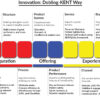
A radical departure from decades of medical conventional thinking, the American Heart Association (AHA) and American College of Cardiology (ACC) recently released the 2025 High Blood Pressure Guideline, recasting the definition of “normal” blood pressure. Once held as optimal, 120/80 mm Hg is now highlighted as a redline, in theory bringing to an end classical reactive care in favor of a more preemptive approach to prevention. Covered by Rediff Get Ahead on August 26, 2025, this sweeping change involves primary prevention — as opposed to disease treatment after the fact — becoming the focus for management of hypertension.
The hallmark of this new directive is placing the emphasis on lowering systolic blood pressure to under 120 mm Hg, a more stringent objective than in prior versions of the guideline. This is recognition that the prevalence of hypertension has now come to afflict nearly half of all American adults. High blood pressure, as pressures in excess of 130/80 mm Hg, remains the most common and changeable risk factor for cardiovascular disease, heart attacks, strokes, and chronic kidney disease. Writes the authors of the guideline, inaction to this point is bringing about unnecessary misery as well as preventable mortality, and the time has come that physicians, as well as their patients, start to pay attention to even “borderline” rises.
One of the most radical aspects of the 2025 guideline is that lifestyle change has again been robustly reaffirmed as the primary means of blood pressure control. Lifestyle is no longer inevitably a helpful adjunct to therapy—it is the foundation. The guidelines provide unreserved endorsement to the ideal of a ‘Complete Lifestyle Prescription’ as integral to all individuals, as prevention or as management for hypertension. A new emphasis is placed on dietary regimes, specifically the DASH (Dietary Approaches to Stop Hypertension) diet. The sodium threshold has again been lowered dramatically to less than 1,500 mg per day—a radical decrease from the previous level of 2,300 mg, and one that is consistent with burgeoning evidence relating to the cardiovascular burden that sodium places.
Exercise, once promoted as good, is now clinically specified. Individuals are urged to do at least 150 minutes per week of moderate-intensity aerobic exercise, such as brisk walking, or 75 minutes per week of vigorous exercise, such as running or swimming. Equally important is the adoption in the guidelines of clear weight loss thresholds. In overweight or obese individuals, even a five percent body weight loss has been shown to produce substantial decreases in blood pressure. In carefully selected individuals, especially those with morbid obesity, the guidelines specifically endorse the use of clinically sanctioned pharmacologic therapy such as GLP-1 receptor agonists—agents that have impressive efficacy in recent clinical studies.
One of the most controversial changes is the recommendation to avoid alcohol entirely. Earlier guidelines allowed moderate consumption of alcohol, but the 2025 version makes a clear case for avoiding alcohol. Mounting evidence shows that low doses of alcohol are sufficient to increase pressures and cause long-lasting cardiovascular risk. Stress, another silent killer of hypertension, is discussed more openly in this edition. The new guideline officially includes stress management tools—mindfulness, deep breathing, and cognitive-behavioural therapy—in the treatment plan of a hypertensive individual.
From the management point of view in medicine, the guideline recommends a reduced threshold for drug treatment. For the case of Stage 1 Hypertension, where systolic pressure is between 130-139 mm Hg or diastolic pressure is between 80-89 mm Hg, doctors are now encouraged to consider early treatment with antihypertensive drugs in the presence of other cardiovascular risk factors. These are the cases with diabetes, kidney disease, pre-existing heart disease, or 10-year cardiovascular risk ≥ 7.5 percent. This cautious lowering of the threshold for intervention is underpinned by robust data, including findings from the groundbreaking SPRINT (Systolic Blood Pressure Intervention Trial), which has conclusively demonstrated that intensive lowering of blood pressure reduces cardiovascular events as well as mortality to a significant extent compared with conventional treatment targets (SPRINT Research Group, NEJM, 2015).
Technology is also prominent in the new guidelines. The AHA/ACC guidelines emphasize the importance of certified home blood pressure measurement systems and digital health technologies. These technologies provide more standardized, more precise readings than in-office readings in isolation and are integral to ongoing self-management, as well as clinical decision-making. The guidelines prompt clinicians as well as patients to stay focused on a more complete, patient-centered approach to care. Guidelines for treatment should become individualized based on the individual’s entire risk profile, comorbid states, as well as lifestyle patterns. A one-size-fits-all approach is no longer acceptable in this complex, heterogeneous group of patients.
Hypertensive emergencies continue to pose a big challenge, and the guidelines still categorize the crisis as any pressure above 180/120 mm Hg, particularly if with signs such as acute headache, visual changes, chest pain, or neurological deficit. Immediate medical therapy is inevitable in these cases, and doctors are pressured to act quickly to prevent life-limiting sequelae.
These updates provide these individuals with needed direction. If your existing blood pressure is lower than 120/80 mm Hg, your focus is proactive prevention through prolonged healthy living. If you fall in the higher range of 120-129/<80 mm Hg, lifestyle intervention is needed immediately in order to prevent full-blown hypertension. Individuals with Stage 1 hypertension will want to talk this change in guidelines over with their physician to determine if medication is now in order. And for those already in the higher stages of Stage 2 (140/90 mm Hg and above), a dual approach in the form of medication plus vigorous lifestyle change is in order. Briefly, the guidelines for 2025 AHA/ACC are revolutionary in their approach to hypertension management. They are not just numeric revisions to thresholds; instead, these are guidelines that are tantamount to a clarion call—a revolution towards early, aggressive, and personalized treatment that will potentially change the public health map. The promise is that by altering the approach to defining and treating blood pressure, we can forestall the burgeoning epidemic of cardiovascular disease in its infancy and empower millions to take charge of their health, beat by beat.
Dr. Prahlada N.B
MBBS (JJMMC), MS (PGIMER, Chandigarh).
MBA in Healthcare & Hospital Management (BITS, Pilani),
Postgraduate Certificate in Technology Leadership and Innovation (MIT, USA)
Executive Programme in Strategic Management (IIM, Lucknow)
Senior Management Programme in Healthcare Management (IIM, Kozhikode)
Advanced Certificate in AI for Digital Health and Imaging Program (IISc, Bengaluru).
Senior Professor and former Head,
Department of ENT-Head & Neck Surgery, Skull Base Surgery, Cochlear Implant Surgery.
Basaveshwara Medical College & Hospital, Chitradurga, Karnataka, India.
My Vision: I don’t want to be a genius. I want to be a person with a bundle of experience.
My Mission: Help others achieve their life’s objectives in my presence or absence!
My Values: Creating value for others.
References
- Rediff Get Ahead. Alert! Why 120/80 BP Is Now High Risk. August 26, 2025. Available from: https://www.rediff.com/getahead
- Whelton PK, Carey RM, et al. 2017 ACC/AHA Guideline for High Blood Pressure Management in Adults. Hypertension. 2018;71:e13–e115.
- SPRINT Research Group. A Randomized Trial of Intensive versus Standard Blood-Pressure Control. New Engl J Med. 2015;373(22):2103–2116.

















Dear Dr. Prahlada N.B Sir,
Thank you for sharing the insightful article about the new hypertension management guidelines. The revised threshold of 120/80 mmHg as a red flag for high blood pressure is a significant shift in our understanding of cardiovascular health. I appreciate the emphasis on lifestyle changes, such as the DASH diet and regular exercise, as well as the importance of stress management.
The guidelines' focus on personalized treatment and early intervention is a step in the right direction. It's crucial for individuals to work closely with their healthcare providers to manage their blood pressure and reduce the risk of cardiovascular disease.
Your dedication to spreading awareness about healthcare and wellness is truly commendable, sir. I'm grateful for your expertise and look forward to learning more from you.
Best regards,
Reply🙏💖